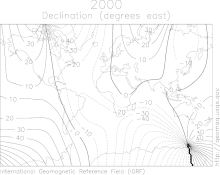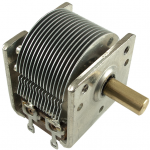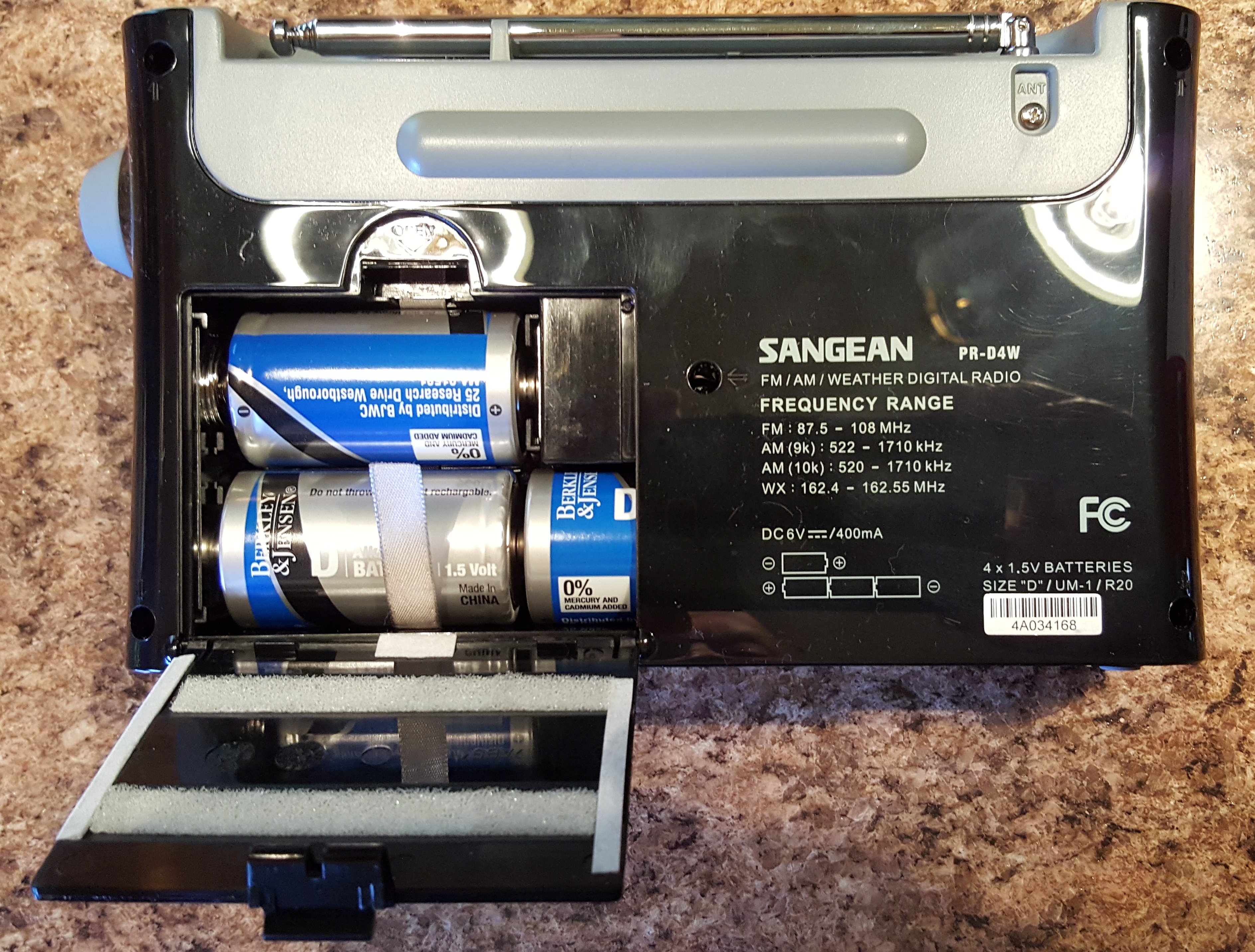A caveat: the compass bearing to the station from your location, and the real world bearing may be completely different animals. Local magnetic anomalies, and the vagaries of skywave propagation can be tricky. Some of the California stations here (and California is directly south of my state) come in up to 30-40 degrees away from where they should, due to local hills, and possibly a local magnetic anomaly.
There's also a difference between "true north" and "magnetic north"; Wikipedia probably explains that better than I can, so here's an excerpt:
Magnetic north and magnetic declination

Magnetic declination from true north in 2000.
Main article:
Magnetic declination
Historically, the magnetic
compass was an important tool for
navigation. While it has been widely replaced by
Global Positioning Systems, many airplanes and ships still carry them, as do casual boaters and hikers.
[27]
The direction in which a compass needle points is known as magnetic north. In general, this is not exactly the direction of the North Magnetic Pole (or of any other consistent location). Instead, the compass aligns itself to the local geomagnetic field, which varies in a complex manner over Earth's surface, as well as over time. The local angular difference between magnetic north and
true north is called the
magnetic declination. Most map coordinate systems are based on true north, and magnetic declination is often shown on map legends so that the direction of true north can be determined from north as indicated by a compass.
In North America the line of zero declination (the
agonic line) runs from the North Magnetic Pole down through
Lake Superior and southward into the
Gulf of Mexico (see figure). Along this line, true north is the same as magnetic north. West of the agonic line a compass will give a reading that is east of true north and by convention the magnetic declination is positive. Conversely, east of the agonic line a compass will point west of true north and the declination is negative.
North Geomagnetic Pole
Main article:
Geomagnetic pole
As a
first-order approximation, Earth's magnetic field can be modeled as a simple
dipole (like a bar magnet), tilted about 10° with respect to
Earth's rotation axis (which defines the Geographic North and Geographic South Poles) and centered at Earth's center. The North and South Geomagnetic Poles are the
antipodal points where the axis of this theoretical dipole intersects Earth's surface. If Earth's magnetic field were a perfect dipole then the
field lines would be vertical at the Geomagnetic Poles, and they would coincide with the Magnetic Poles. However, the approximation is imperfect, and so the Magnetic and Geomagnetic Poles lie some distance apart.
Like the North Magnetic Pole, the North Geomagnetic Pole attracts the north pole of a bar
magnet and so is in a physical sense actually a magnetic
south pole. It is the center of the region of the
magnetosphere in which the
Aurora Borealis can be seen. As of 2015 it was located at approximately
80°22′12″N 72°37′12″W, over
Ellesmere Island, Canada but it is now drifting away from North America and toward Siberia.
Geomagnetic reversal
Main article:
Geomagnetic reversal
Over the life of Earth, the orientation of Earth's magnetic field has reversed many times, with magnetic north becoming magnetic south and vice versa – an event known as a
geomagnetic reversal. Evidence of geomagnetic reversals can be seen at
mid-ocean ridges where
tectonic plates move apart and the seabed is filled in with
magma. As the magma seeps out of the
mantle, cools, and solidifies into igneous rock, it is
imprinted with a record of the direction of the magnetic field at the time that the magma cooled.

 www.tubesandmore.com
www.tubesandmore.com







